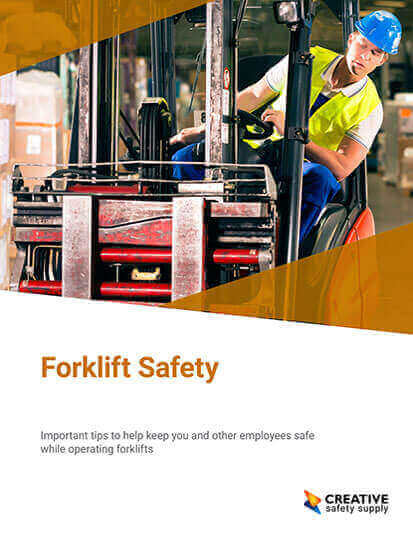
For businesses across a range of industries, the powerful capabilities of forklifts make them a vital asset to speed up operations and maximize productivity. As much as they bring value to a company, it is paramount that the necessary health and safety procedures are put in place to ensure responsible working. The outcome of a forklift accident can be incredibly serious, causing risk to both operators, workers on site, and the warehouse itself. Whether an accident is caused by improper loading or a lack of maintenance, there have been a range of incidents occurring from poor forklift safety so this article will discuss examples of forklift incidents and the measures which can be taken to avoid the same thing happening.
Brake failure
After a company failed to carry out frequent maintenance checks on their fleet, a forklift had faulty brakes which inevitably lead to a failure, seeing the driver unable to stop and consequently collide with a shelving unit. Although lucky that no people were nearby, the collision resulted in significant damage to the warehouse and stock, creating disruption to operations.
Regular maintenance should be scheduled, inspecting forklifts to spot any potential issues before they develop and cause accidents. As well as ensuring the safety of vehicles, it is important for businesses to have emergency procedures in place, providing guidance on how to act in the event of an incident should it occur. This means that workers are trained on how to act in an emergency and can respond effectively, acting quickly and stabilizing the situation.
Obstructed view
In order to speed up the loading process, a forklift operator overloaded their vehicle with a raised load that obstructed their view ahead. Without having full vision of their route, the driver failed to notice a member of staff walking on the footpath and caused an accident, putting the life of their colleague at risk.
All forklift operatives must be taught proper loading techniques before they are permitted to use the vehicle. They must be aware of how to safely secure a load without overloading the forklift or distributing the weight unevenly. As well as safely managing their own load, they should be able to identify potential safety and stability issues of goods which may have been loaded by another member of staff, addressing this before they maneuver the vehicle.
Lack of training
A forklift operator who is new to the company was carrying out their duties without having had sufficient training to do so. Without being educated on the safe operation of the forklift, they proceeded with an insecure loaded pallet and proceeded at a higher speed than safe to do so. This resulted in the driver losing control of the vehicle and dropping the load, damaging the contents.
Employers have a duty to provide thorough training programs that teach employees the technical aspects of forklift use as well as the importance of being aware of their surroundings. With the dangers of not following load capacity limits having the potential to cause large scale incidents, legal trouble can also be faced if a business is not operating in line with health and safety regulation.
Sharp turn
While in motion with a full load, a forklift operator was moving through the warehouse at a higher speed than sensible, resulting in the forklift tipping onto its side when a corner was taken too quickly. The incident left the driver injured and the goods on the pallet were damaged, creating hold ups which impacted the supply chain processes. Unfortunately, some variation of this scenario is all too common in warehouses, and the reason for it is almost always lack of proper training and experience.
Whatever their experience level, forklift operators must always follow the company procedures. It is the responsibility of the business to ensure that clear signage and barriers are in place to highlight pathways and direction of travel, introducing warning signs where necessary to alert forklift operators of any hazards in the area. In areas where there may be people walking or limited visibility, the driver should remain alert and use their signals and horns to alert people of their presence.
Similar Questions
- What are the Most common Forklift Accidents?
- Why would a forklift tip over?
- How can workplace design prevent forklift accidents?
- Who should be trained on forklift safety?
- Why is forklift safety training important?
- How often should forklift training be provided?
- How are Forklifts Safely Operated?
- Do forklift operators need to be certified?
- How does floor marking affect forklift safety?

